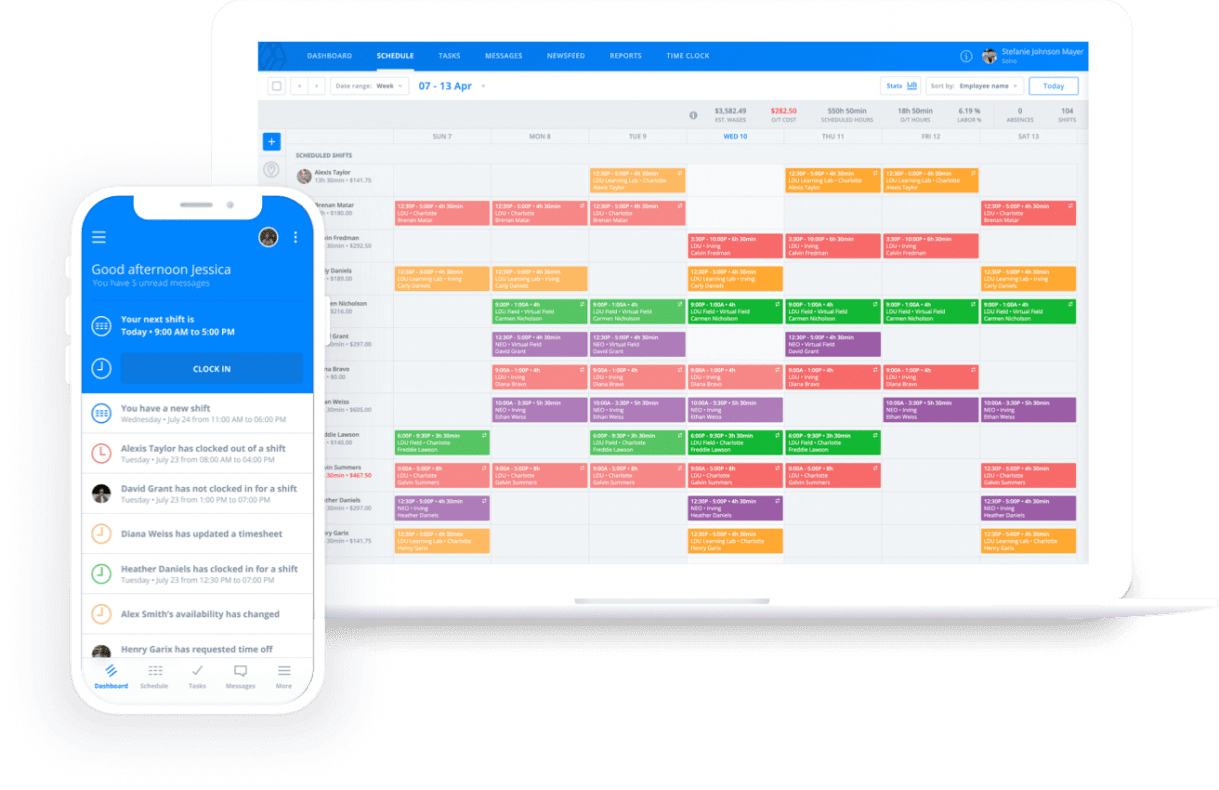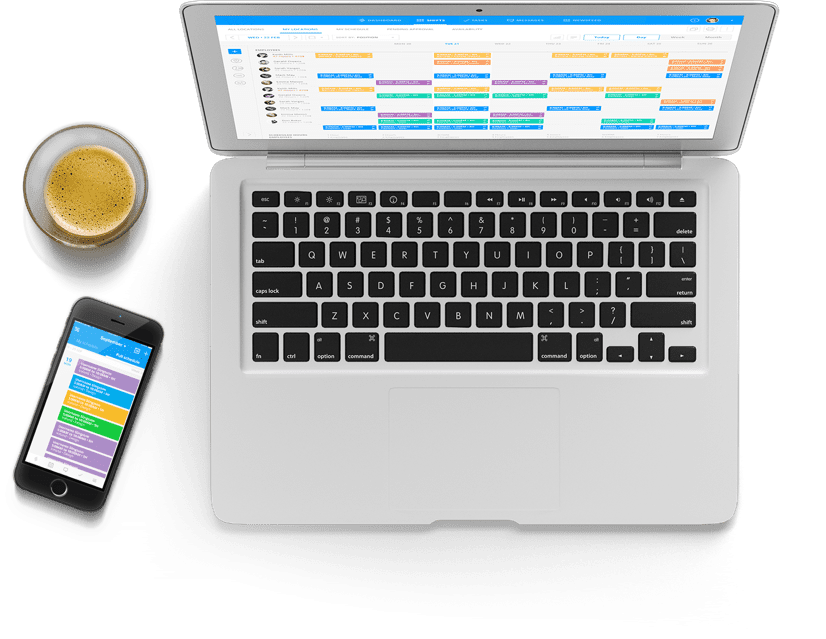Onboarding Checklist: How to Onboard Your Employees the Right Way
Your onboarding checklist should be more than just showing a new employee their ...

There are few words as exciting as, “Welcome to the team!” But just attracting employees to your business isn’t enough. To be successful, you need to retain them — and that starts right from day one with your onboarding process.
In this article, the experts at Sling provide tips to help you create a successful onboarding process that’s perfect for your employees and your business.

After you hire your new team member and say, “Welcome to the team!”, it’s important to stay in contact with that person before their first day at work.
Consider giving the new hire access to your business newsfeed so they can get an idea of what goes on in the day-to-day workings of your business.
You can also have them fill out any necessary paperwork before their first day so that they can focus on more important issues when they arrive.
Onboarding a new hire also includes keeping your existing team apprised of the details. Once you’ve finalized the decision to hire someone, send out an informational email to your existing team.
Include vital information about the new employee, including:
Providing this information to your team early on prepares them to welcome the new employee and makes the transition easier for all involved.
A big part of making the new employee feel welcome to the team is telling them what to expect on their first day.
During the interim between when you hire them and when they report for work, provide vital information such as:
Giving your new hire these details before they start can help alleviate some of the anxiety that all employees feel on their first day in a new job.

Depending on the type of business you run, setting up the new hire’s personal space and equipment may be as simple as cleaning out a locker and creating a new account in your time clock software.
For other businesses, this step may require extensive time and effort to prepare a workspace, hook up any necessary equipment, and assemble requisite documents for the new arrival.
Be sure to address such items as:
By preparing these details before the team member arrives, their first day will go smoothly and they won’t have to wait for critical tools.
To make onboarding as smooth as possible, avoid bringing in the new hire during your busy time of the month or right before an important deadline.
If something goes wrong during their first day — like the network going down or a project going south — try to insulate the new employee from these issues so that they don’t feel overwhelmed.
Doing so will create a good first impression that will make the team member feel comfortable in their new position.
Making the new team member feel welcome is a crucial part of the onboarding process, so don’t delegate this responsibility to someone else. As their main contact, you should greet them and guide them through their orientation.
It also creates goodwill and camaraderie if you organize a small “welcome to the team” event when the new employee arrives.
For example, holding a coffee-and-donuts get-together or other social mixer is a simple way for the new hire and your existing team to get acquainted with one other.

Don’t view your onboarding process as a side task you need to get through before you can get back to the real work.
View it, instead, as the path to success for the new employee and your business as a whole.
When you place the same importance on onboarding as you do on organizational strategy or project planning, the way your employees work will improve. Ultimately, that will translate into improvements in every corner of your business.
And when it comes to onboarding success, scheduling is a big part of the equation.
Depending on the type of business you run, you may be able to incorporate any number of tailored schedules — from the basic 9-to-5 workday to the advanced rotating schedule — into your workweek.
If that sounds more complicated than you have time for, don’t fret, Sling is here to help. Sling makes it easy for you — the manager or owner — at all levels of the schedule-making experience.

Sling’s onboard artificial intelligence provides suggestions for the perfect fit and even notifies you if you double-book an employee or schedule them when they’ve asked for time off.
From the employees’ end, Sling gives them the power to request time off, specify days they can’t work, and even find substitutes for their existing shifts so you don’t have to deal with every little bump in the road.
And with other advanced features — including built-in time clock, cloud-based storage and access, budgeting and labor cost tools, reporting, task list, newsfeed, and powerful communication tools — Sling is a one-stop scheduling and workforce management solution for the 21st century.
For more free resources to help you manage your business better, organize and schedule your team, and track and calculate labor costs, visit GetSling.com today.
See Here For Last Updated Dates: Link
This content is for informational purposes and is not intended as legal, tax, HR, or any other professional advice. Please contact an attorney or other professional for specific advice.
Schedule faster, communicate better, get things done.